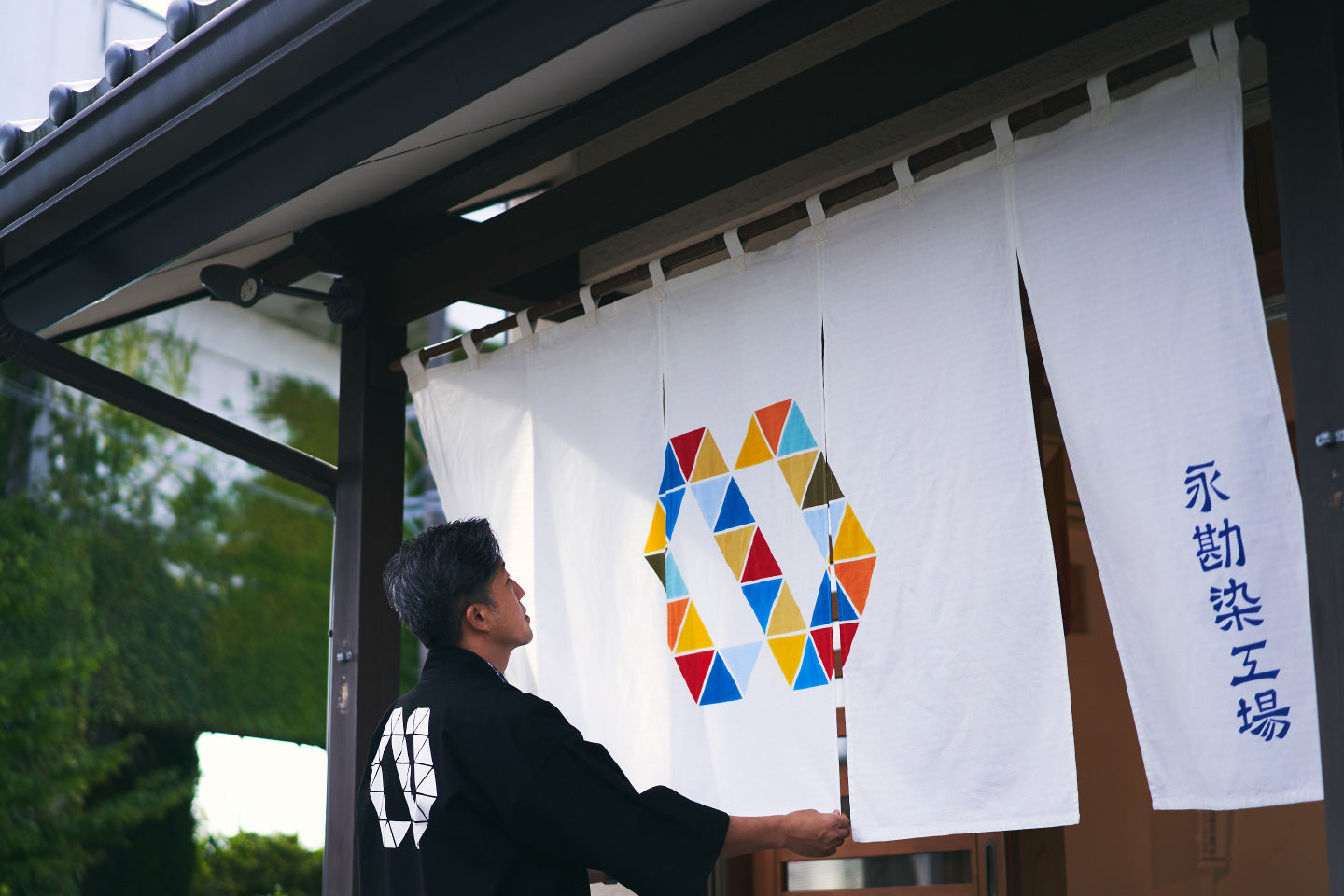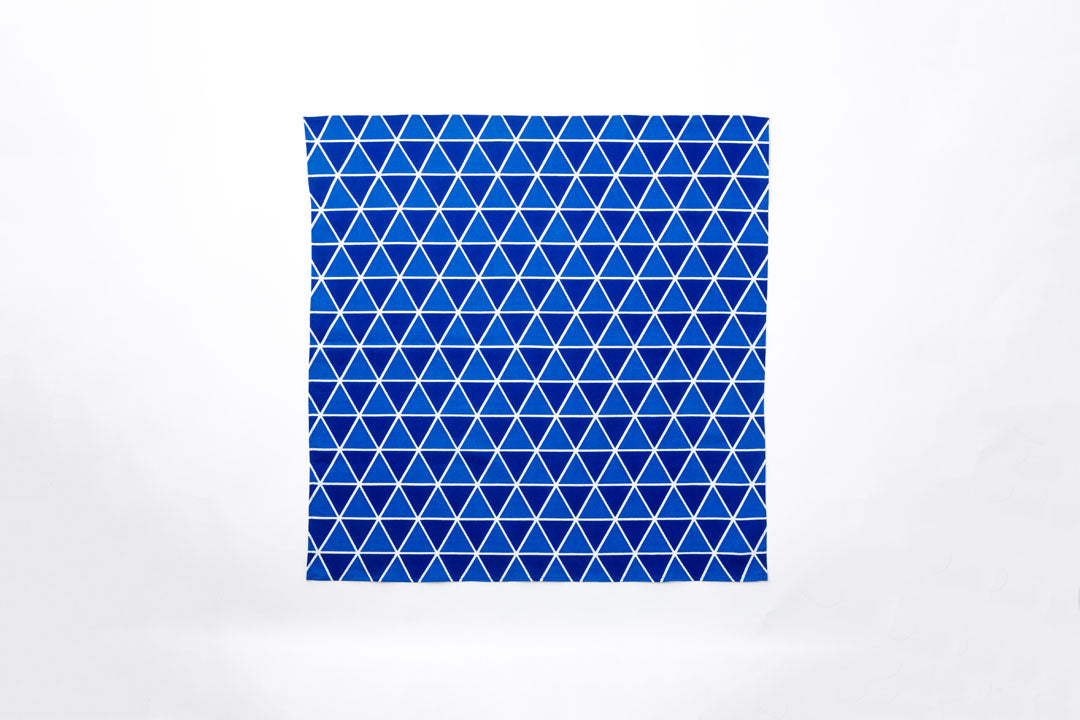
Dyeing, where Color and Time are Layered
Established in 1887 by the skilled dyer Kanbei Nagano in Moto-Aramachi (now Aoba-ku Ichibancho), the Nagakan Dyeing Factory boasts a rich history of crafting happi coats and aprons for the city's merchants, craftsmen, and residents in the past. Today, Nagakan continues to employ traditional methods to create a diverse array of products, ranging from shrine banners and izakaya aprons to noren curtains for local communities.

The Furoshiki and Tairyō-bata Patterns
In Japan, Furoshiki has long been employed for the practical tasks of wrapping, carrying, and storing items. Beyond its utilitarian purpose, it has gained popularity as a tool for expressing blessing by adorning it with various auspicious patterns. One such traditional motif includes the Tairyō-bata, the flag hoisted on fishing boats upon a bountiful return. This flag, believed to have originated during the Edo period, features auspicious sea-related symbols and embodies the spirit of the fishermen. Today, Tairyō-bata can be observed not only on fishing boats but also during festivals and celebratory occasions like weddings and births.

Hikizome
Hikizome, or brush-dyeing, is a technique in which a brush is used to hand-dye entire fabrics. The brush smoothly glides over the surface, ensuring an even application of the dye solution. Shinshi is typically employed during this process to maintain fabric tension.

Day 1: Factory Tour and Learning Technique of Norioki
Begin with an introduction to the history of the Nagakan Dyeing Factory and a concise tour guided by the skilled artisan. Then you will delve into the immersive process of learning norioki, an essential of applying the rice paste to the fabric. You can:
- Familiarize yourself with the diverse tools and materials essential to the craft
- Learn the process of norioki, including practicing how to draw glue on the underpainting through step-by-step guidance.

Day 2: Learning Technique of Hikizome
Use hikizome technique to dye the patterns with a brush. Move the brush firmly and quickly from right to left, taking care not to touch the area where the paste has been applied to avoid unevenness. After drying, our artisans will conduct color fixing, washing, and sewing the apron and tote bag by hand. The items will then be sent to your home later through a mail service by Oshinsha.




